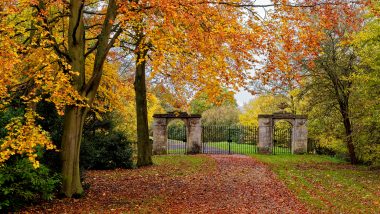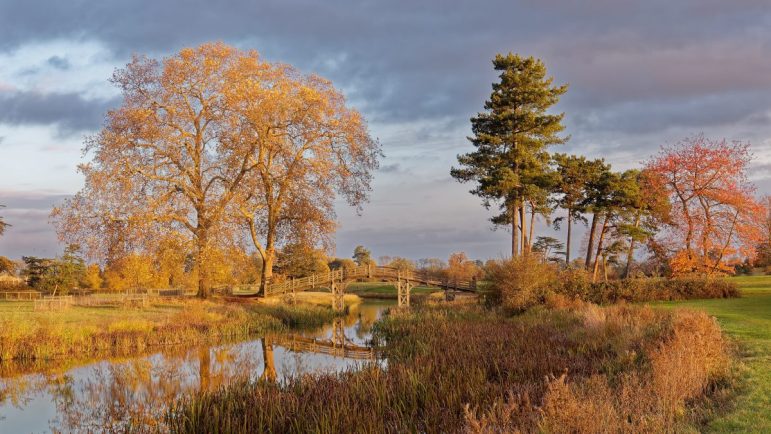The sunny spell towards the end of September together with six months of high levels of sunshine have boosted the chances of a ‘spectacular and prolonged’ autumn display of colour, according to experts at the National Trust.
 Photo credit: John Miller
Photo credit: John MillerThe duration and intensity of autumn colour relies on lots of sunshine for trees to bask in prior to the season’s arrival.
Although the very dry spring caused stress to some trees, particularly ash trees making them more susceptible to disease, classic summer weather with good levels of both sunshine and rain has given trees the best chance of staying in leaf and retaining their full crowns until temperatures start to drop and colour starts to develop.
Warm summers with lots of sunshine, help to increase the leaf sugar content which, in turn, results in a range of pigments – from reds and oranges, to greens, golds and browns – as leaves turn.
But, weather patterns will need to remain favourable through much of October for a memorable display, with enough sunshine during the day, cold conditions at night and no intense storms or rainfall.
The conservation charity cares for more than 10 million trees in England, Wales and Northern Ireland and looks after one of the largest populations of ancient and veteran trees in the world.
Some of its most spectacular autumn displays can be seen at Stourhead in Wiltshire – home to the UK’s tallest oak tree, veteran trees including beech, holly, lime plus some more exotic trees including tulip trees, Japanese maple and katsura; Sheffield Park in East Sussex – which is renowned for its collection of rare trees including maples, tupelo trees and swamp cypress, providing a taste of North America in the fall; and Speke Hall where visitors can enjoy the dazzling yellows of the avenue of lime trees.
Simon Toomer, Plant Specialist at the National Trust, said: “Autumn in the northern hemisphere is one of the natural world’s great spectacles. It starts in the far northern deciduous forests and progresses southwards to the warm temperate regions over about a 10 week period. Our northern gardens and woodlands are therefore a week or two ahead of the most southerly.
“The primary trigger for trees to begin the process of shutting down for the winter and shedding leaves is day length but weather conditions through the summer and early autumn affect the rate of leaf loss and intensity of colour.
“North America and Japan are the best-known global hotspots for autumn colour and we are lucky that many of our gardens and parks have many trees from these areas. This variety of species ensures a long and very colourful display and this year, with favourable weather conditions, the show should be spectacular.”
Tom Hill is Trees and Woodland Advisor for the South East. Among the places he looks after is Winkworth Arboretum which has many champion trees, and Petworth Park which is home to many ancient trees.
He says: “We’re just starting to see some of the maple trees start to turn – from greens to reds and oranges. And, judging by how the weather had been over the past few weeks I’d expect our autumn colour to be at its peak in mid to late October.
“Amazingly, we care for around 100 champion trees at Winkworth – all of them either the tallest or widest trunked trees of their species, either in the county or across the whole of the UK and Ireland.
“And, at Petworth we care for many ancient trees – some of which are thought to be more than 600 years old. The grand old oaks and towering sweet chestnuts create deep carpets of leaves, perfect for our visitors to rustle through as they wander through across the 18th Century, Capability Brown landscape.
“A woodland may be ancient, but it never stands still – it is literally teeming with life at all times of year, not just above ground, but beneath our feet.
“The falling leaves nourish the soil and produce a habitat of their own, supporting billions of microscopic organisms that provide the building blocks for all life in the forest. It’s also a special time of year to appreciate the amazing natural architecture of our trees as their branches are revealed for the first time in months.”
It’s not only trees that may offer spectacular colour this autumn, berries in hedgerows and colour in gardens are also doing well.
Simon continues: “Fruit and berries offer an additional display and our native hedgerow shrubs provide a riot of colour. One of my favourites is spindle with its bright pink fruits with orange seeds, once used to treat headlice. Most people recognise blackthorn by its welcome spring flowers but in the autumn it’s the bloomy blue sloes that draw attention.
“Many of our common garden plants like cotoneaster, dogwoods and mahonia are also at their best in autumn.
“With the evenings already drawing in and with the potential of further localised lockdowns due to the coronavirus, it’s more important than ever that we take the time to notice nature and to drink in the colourful landscapes that we can see at this time of year. Together with the particular dusky, heavy scent of autumn and the sounds of crisp leaves crunching under foot, will all serve to help our wellbeing through the next few colder, darker months.”
For more information on places to visit for autumn colour or to support the National Trust’s Everyone Needs Nature campaign, where donations will go towards nature projects to include planting an additional 20 million trees, visit nationaltrust.org.uk
 Photo credit: John Hubble
Photo credit: John Hubble










